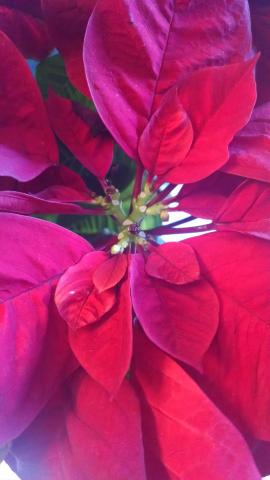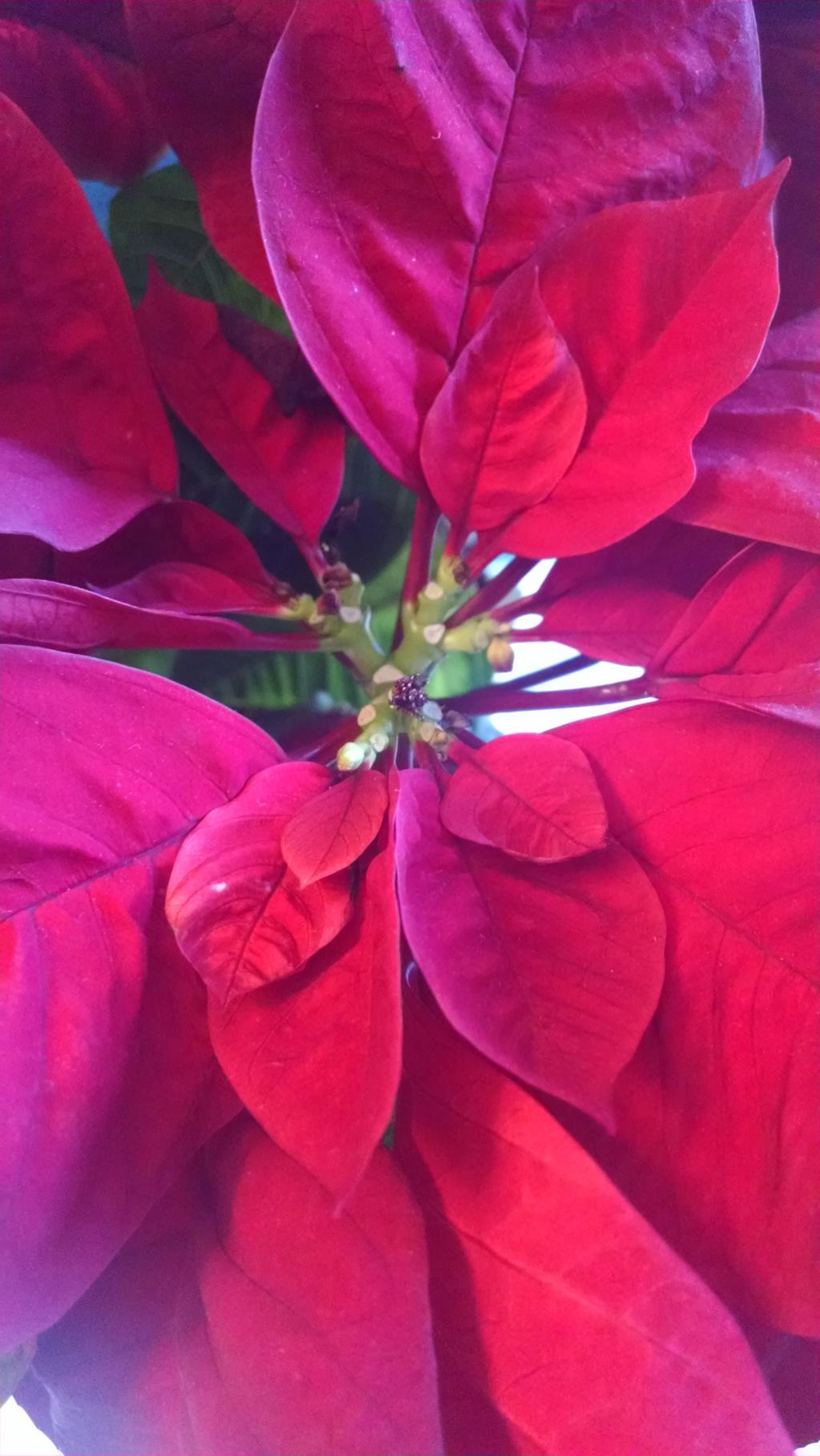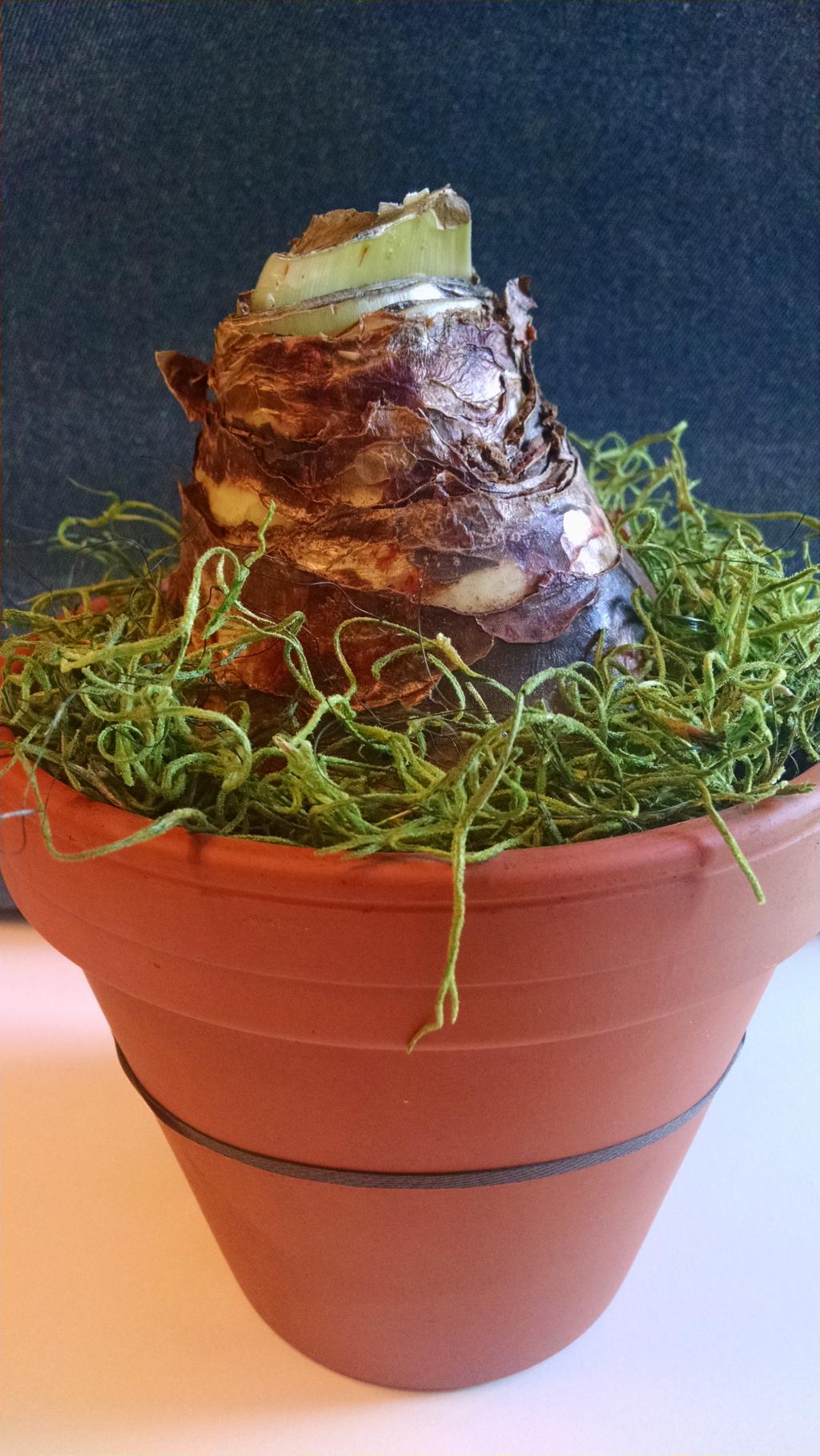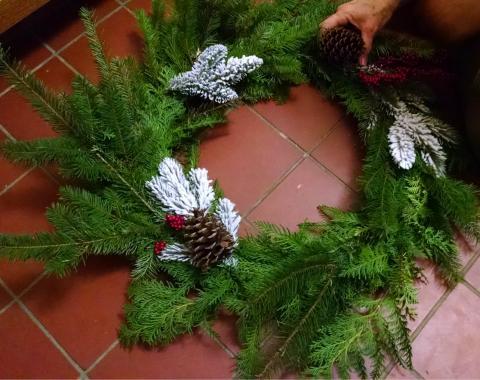
Poinsettias Can Get HOW Tall? And other fun facts and tips for growing holiday plants!
December 15, 2015
Nature is alive and well during the holiday season, and although the days can feel blustery and cold you can bring some of the outside in through holiday plants. As a gardener, I love holiday greenery, as it reminds me that those warm, sun-drenched days in the garden aren’t so far off after all. And plants are great tools for teaching kids about science, food and nature at ANY time of the year - perhaps even more so when when the days get short and cold and it can be a bit harder to play outside. They can also lead to some fun craft projects, too!
It’s easy to make your holiday greenery look great, even if this is the only time of year when you attempt to grow plants. Here are some tips on a few holiday favorites: trees, Poinsettias, Amaryllis and evergreen decorations (wreaths, etc.).
Holiday Trees:
Over 25 million holiday trees are sold in the US each year, according to the National Christmas Tree Association. They’re an important crop in my state of Pennsylvania, and every December we head out to a tree farm to select and cut our own. While there are many types of holiday trees, including Douglas Fir (our favorite), Blue Spruce (beautiful but very sharp needles), Firs and Pines, they all respond to some basic care tips:
- Water. Ok this is an obvious one, but it's really important. The plant's vascular system - which carries water to the branches and leaves - is just inside the layer of bark, and it starts to close up once a tree is cut. If you're cutting your own tree, get it into water as soon as you can. If you’re buying a pre-cut tree, be sure to cut at least 1/2 inch off the base before placing in your tree stand and decorating. Trees will drink a lot of water the first few days after being cut - about a quart of water per inch of trunk diameter per day - so make sure the trunk is always submerged. If the base is dry for more than a handful of hours, sap will actually start to seal up the vascular system making it impossible for the tree to draw new water up to the branches (read: your tree will die and your kids will be playing in piles of pine needles which you'll never, ever, ever succeed in cleaning up). Once you’ve reached that point the only solution is to cut more off the base of the trunk, which can be next to impossible if your tree is already decorated. So again, water.
- Trees really don’t like dry heat or drafts. Try not to place your tree near a heating vent, doorway or sunny window.
- Don't keep a fresh tree in the house for more than four weeks. Although with proper care it can stay lovely through most of that period, it will eventually start to dry out and drop needles.
- Penn State Extension also offers the great advice to use the evergreen boughs as a mulch in your perennial garden, once the holiday season is over. Many communities also have disposal sites / special pick-up days for discarded trees.
- And finally, on the question of holiday trees and fires ... The California Christmas Tree Association asserts that trees don't pose any special or unusual risk in your home. However it's important to keep a few safety tips in mind: check all electrical appliances (like lights) used on or near the tree for fraying wires or other malfunctions; keep trees far away from open flames, sparks and heat sources; and unplug the tree when you're not at home and/or sleeping.
Check out some additional tips from Perdue Extension and Penn State Extension on selecting and caring for holiday trees.
Poinsettias:
DYK Poinsettias - those iconic and ubiquitous red-bloomed holiday favorites - are one of the most popular potted plants sold at any time of the year? Although I’m a big gardener, I was kinda neutral when it comes to Poinsettias. UNTIL I came across these fun facts from the University of Vermont Extension website. For example, did you know:
- The colorful leaves are in fact just that - leaves. The flowers are actually smaller yellow buds at the center of the plant which you might not notice. The leaves start changing colors when those buds appear.
- There are over 100 varieties of Poinsettias, so although you may be used to the classic deep red, you can also find all sorts of pink and speckled poinsettias too.
- Over 34 million Poinsettias are sold each year, which is about 23% of all potted plants. They’re the top-selling potted flowering plant.
- And Poinsettias are actually a small tree, and can grow up to about 12 feet tall (imagine! Now that's a plant I would buy for my house. I'll name it Seymour.)
- Native to southern Mexico, Poinsettia leaves were used to dye fabric and the sap as medicine.
- December 12 is actually National Poinsettia Day in the US. Who knew? Anyone celebrate that? Gardeners like me, I guess.
Some tips on growing Poinsettias:
- Poinsettias are tropical plants, and like at least 8 hours/day of direct light and temperatures above 65 degrees. Beware: they don’t like cold weather or drafts. Even a short trip to the car in blustery cold weather can shock the plant (hence the foil and celophane wrappers they're often sold in).
- Make sure the plant has good drainage. If you bought it encased in a foil wrapper, either remove the wrapper or punch holes in the bottom of it. Only water when the soil surface of the plant is dry. Too much water will cause the leaves to drop.
- On kids and pets: Poinsettias are NOT poisonous, although they have the reputation for being so. However just like many other plants, they’re definitely not meant to be eaten. But you can safely have them around the house assuming no one will try to make a Poinsettia-leaf salad or the like. More on their toxicity here. And note: other winter greenery like holly bushes DO have poisonous berries, so keep it in mind as you choose what to bring indoors.
- Love your plant so much you want to keep it? You can! Poinsettias will rebloom year after year with the proper care. They need short days to bloom - about 10 weeks of 12 hours or less of sunlight each day. So starting at the beginning of October move them in a very dark place in the early evening through the next morning (like a closet. Seriously - any light during this time will affect blooming). Check out some easy tips for doing that here and here.
Amaryllis:
Amaryllis provide an extravagant pop of color in the deep of winter, and are one of my holiday favorites. It's also a bulb which can bloom again and again.
- As with Poinsettias, Amaryllis like warmer temperatures and dry soil. Let the soil dry to the touch before watering again. Place your pot in a sunny location.
- You can certainly keep your Amaryllis year after year. When the bloom starts to die back, cut the flower stalk (not the leaves) down to about 2 inches above the bulb. Then just treat it like your other houseplants, and bring it outside next summer, etc. Amaryllis also needs a winter period of about 10 weeks to start blooming, so next fall bring it indoors, cut leaves back to a few inches above the bulb, place it in a cooler dark place, and water sparingly. After this period you can place it in a new pot, bring it back into your sunny room, start watering more regularly, and wait for your bloom to grow!
Check out more tips here from UVM Extension and White Flower Farm.
Evergreen Decorations:
This is a big category, so I'm offering some general tips. (Also be sure to check out my blog post on making wreaths!)
- Evergreen decorations can be used indoors or outdoors, so almost any kind of evergreen can work. However certain types - for example Hemlock and Spruce - are more likely to drop their needles indoors. I've used Cedar and Douglas Fir with success. If you're making decorations yourself (which I highly encourage you to do - get tips here), you can either find cut boughs at a local garden store, or use what you find around your yard.
- In general, decorations placed indoors - for example wreaths - will have a shorter life span than those placed outside.
- Evergreen decorations DO need water, and although they will likely last a few weeks without any watering at all, they'll often do better with a frequent spritzing or soak in a tub of water. However that obviously becomes more difficult if you've added lots of decorations. My mom has been making wreaths for many years and doesn't water them, enjoying them for the time they last. Also remember: propping a few stalks of evergreens in a vase or centerpiece can be both really lovely, and provide the more constant water source they need.
Finally, remember to always check if berries are poisonous before bringing them into the house. Holly berries ARE poisonous, and I won't let me kids anywhere near them after my son once popped two in his mouth without thinking twice. If a child ingests any quantity of holly berries call Poison Control immediately. (And the berries on the wreath below are fake ones.)
There are so many reasons to keep your family connected to nature through holiday plants. First, they're just lovely to look at, and can add warmth to your home during the cold winter months. They also provide great opportunities for kids to think about science, food and the changing seasons. Indeed, plants, animals and food production don't stop in the winter months; our challenge is finding ways to continue to connect to them. Check out some great resources from Project Learning Tree on teaching kids outside in the winter. And be sure to join the Good Food Force for more tips on kids, food and healthy communities year-round!






The views and opinions expressed in this post are those of the author(s) and do not necessarily reflect those of MomsRising.org.
MomsRising.org strongly encourages our readers to post comments in response to blog posts. We value diversity of opinions and perspectives. Our goals for this space are to be educational, thought-provoking, and respectful. So we actively moderate comments and we reserve the right to edit or remove comments that undermine these goals. Thanks!